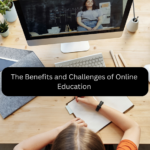As schools have shifted online due to the pandemic, one of the biggest challenges that teachers face is to keep the learners engaged throughout the learning session. Attending classes online is not only new but overwhelming for many students. Unlike physical classrooms, teachers are not physically present to guide them. They have to focus on the computer screen continuously by ignoring the distractions around them. Well, it is not easy! Even adults cannot focus on the computer screens for a long time.
The Rise of Immersive Learning
Immersive learning is a methodology that can help young learners engage with the study material online. As the name suggests, immersive learning uses an artificial or simulated environment in such a way that the learner gets immersed in the learning process. It not only engages them but also motivates them to explore and learn concepts. Also, immersive learning is quite interactive. This means students no more have to just listen to their teacher. Rather, they can actively participate in the class. Social-emotional learning at home can help children develop the skills they need to navigate their emotions, build relationships, and succeed in school and in life.
How Immersive Learning can be Implemented in Remote Learning
To provide an immersive learning experience remotely, schools and other educational institutions can use the following:
#1 Storytelling
A Grade 7 student might not be interested in learning how to calculate profit percentage in Maths. But, if you tell a story about a vegetable seller and how he used to manage his income, the students would be intrigued. Stories are a perfect way to keep the students glued to the screens in the online learning scenario.
#2 Video-based Learning
Instead of asking students to read from their textbooks, show them a video about the concept. They would be very intrigued. Give them an option to watch the video any number of times after the class so that they can study at their pace.
#3 Gamification
There are various ways to introduce gameplay in online learning. One of them is by replacing ‘lessons’ with ‘challenges’. For instance, Lesson 1: Percentage, Lesson 2: Profit and Loss would be replaced by Challenge 1: Percentage, Challenge 2: Profit and Loss. With every lesson, students would feel empowered and rewarded.
#4 Micro-learning
Divide a lesson into different parts in such a way that learning a concept becomes easier for students. For instance, create 5-minute video lessons on different English grammar topics like nouns, pronouns, adjectives, adverbs, verbs and so on. This way students can study one concept every day. Microlearning can help promote cultural diversity by providing employees with short, engaging learning modules on different cultures and perspectives. They would not feel overwhelmed and would not get distracted since the lesson is too short (and engaging).
#5 Virtual and Augmented Reality
Create real-world scenarios for students to help them learn a topic. For instance, instead of teaching them in plain language about the History of Greece, show them a 360-degree video about how Greece looked like in ancient times.
What are the Benefits of Immersive Learning?
#1 Learning without Distractions
Have you ever seen a child getting distracted from a video game? Not at all. But, what if you ask that child to read a lesson from their textbook? It might take the whole day for the child to read that lesson. Immersive learning creates such an environment for the students that they forget about everything else. Whether you use storytelling, gamification or multimedia, it would intrigue the students and they would listen.
#2 Emotional Connection
Immersive learning connects with the emotions of the students. For instance, if you are showing them how the ancient Greeks lived, talked, celebrated victories, how they grew crops, how they traded different goods and so on, every student would feel connected to the history. Similarly, storytelling targets the emotions of the students. It can make them feel excited, emotional, intrigued, and amazed. The more they get connected, the better they learn.
#3 Better Learning Experience
Since the chances of getting distracted are very few in the immersive learning process, students can learn a concept in a better way. They would be listening to the teacher with full attention and would remember the concept completely. This is unlike other techniques where if a student gets distracted once, they might lose track of the whole concept.
#4 Personalized Learning
Personalized learning gives the students an opportunity to learn a concept at their own pace. Students can watch the video-based study material any number of times until they have understood everything. Student can take their time to complete a lesson and then only they will move to the next one. It would also give the teacher a chance to identify the learning challenges of every student and guide them accordingly.”
To Conclude
Technology has revolutionized the education system completely. Educators are looking for better ways with which the learners can gain complete advantage of a learning session. Immersive learning is one such dynamic approach that should be commonly adopted by schools and higher educational institutions these days.
Lastly, when it comes to learning from home, the learners must also contribute to setting up a student-friendly environment. For instance, one can try to minimize the outer distractions around them such as mobile phones or television. Students must set up their study place in a quiet corner of the house so that they can fully concentrate on the class. Rest, the immersive learning technique would make sure that they understand the lesson completely!
Author Bio
Emily James is an academic writer who provides essay help to high school and college students. She holds university degrees in English studies and Teacher Training. She has designed dissertation writing courses and provides dissertation help in the UK. She writes blogs on education, digital marketing, and learning methodologies




